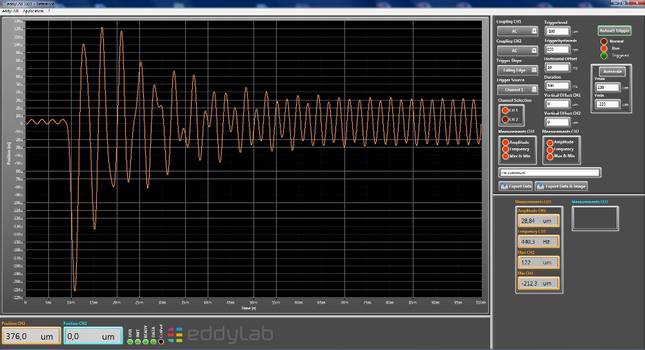
 |
| Triggering a tuning fork |
The oscilloscope is the ideal tool for the analysis of dynamic events. As the name suggests - the module oscilloscope is mostly similar to a classical oscilloscope. Handling this module is fairly easy for everyone with basic experience in oscilloscopes. The functional range of an oscilloscope is ideally suited for the observation of eddy current motion. eddylab replaces the voltage (classical oscilloscope) with the position from the TX-Driver. It is basically possible to visualise periodic and non-periodic motion. In the trigger mode data acquisition is event based. A typical example for this mode is the storage of the signal before and after passing a threshold value in a defined time window. The picture shows the event based data acquisition of a tuning fork while triggering it. Another useful function is AC-coupling. This feature displays the variation of the position instead of the absolute position (the position value oscillates around zero). This function is in particular useful for the visualisation of vibration with small amplitudes. Measurements on the captured data can be taken. These are the frequency, the amplitude and the maximum and minimum values. Captured data can be exported as picture or text-file.
Learn more about the analysis module ocscilloscpe in the eddylab video